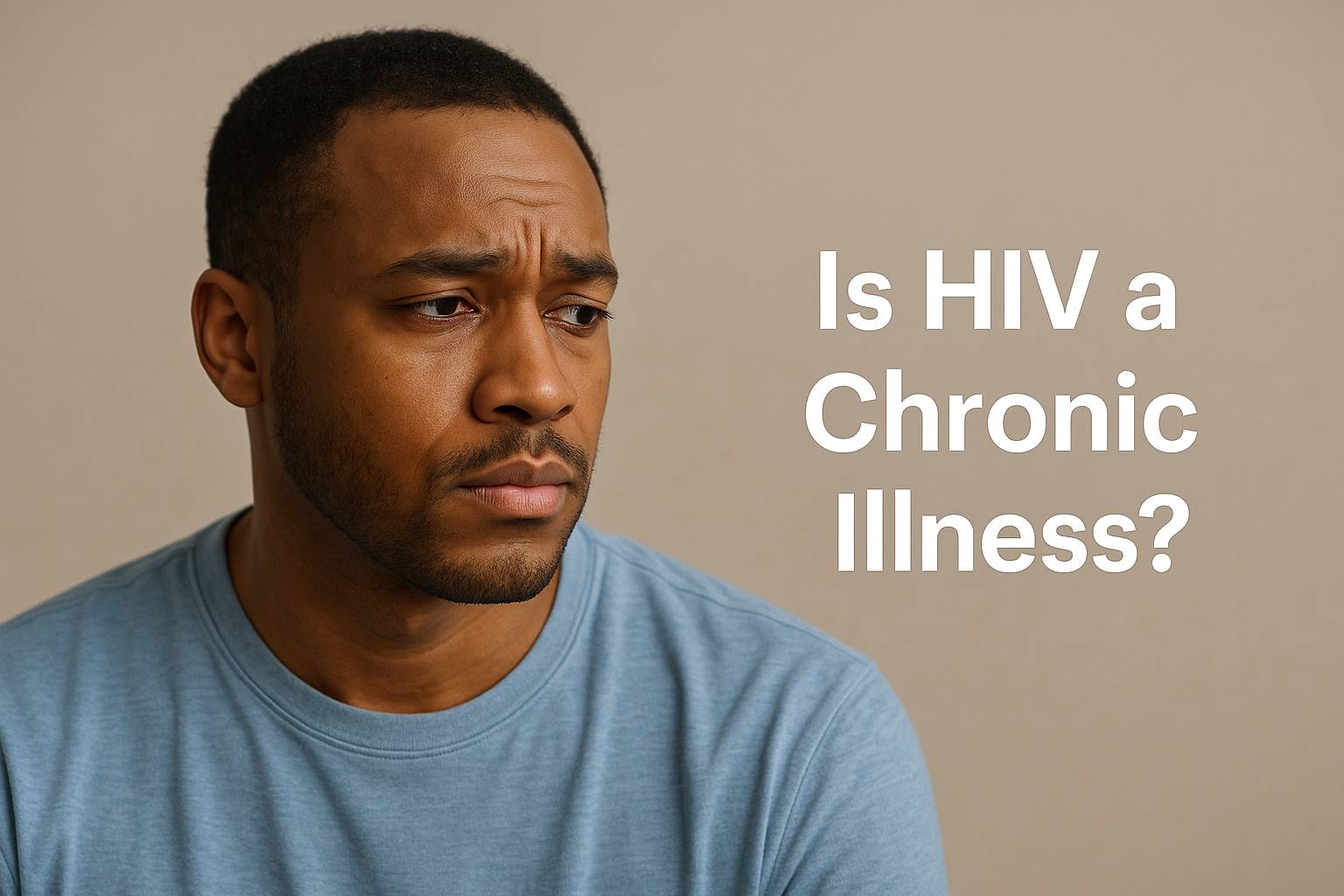
Imagine being told in the 1980s that an HIV diagnosis could mean a long and healthy life. That idea might have seemed impossible then, but today, it reflects the remarkable progress in HIV treatment. With advancements in antiretroviral therapy (ART), HIV has transitioned from a fatal disease to a manageable chronic illness for many.
In this article, we explore what it means to classify HIV as a chronic condition, how treatment enables long-term health, and why the public perception must continue evolving alongside science.
Table of Contents
- Defining Chronic Illness in a Modern Healthcare Context
- How HIV Fits the Chronic Disease Model
- Life Expectancy and Daily Management with HIV
- Reducing Stigma Through Education and Awareness
- Conclusion and FAQs
Defining Chronic Illness in a Modern Healthcare Context
To understand HIV through the lens of a chronic illness, we must first define the term. A chronic condition is typically one that lasts a year or more, requires ongoing medical attention, and limits daily activities or both. Diabetes, hypertension, and asthma fall into this category.
Although HIV is a virus and not a disease in the traditional sense, it behaves like other chronic illnesses in its long-term management. It cannot be cured, but it can be controlled. Once a person is diagnosed, their health is managed through daily treatment and routine monitoring.
According to the Centers for Disease Control and Prevention (CDC), HIV can be successfully managed with antiretroviral therapy. By taking medication consistently, individuals can maintain undetectable viral loads, thereby reducing the risk of transmission and preserving their immune system.
This alignment with chronic care models is why healthcare systems, insurers, and providers increasingly treat HIV as a long-term, manageable condition.
How HIV Fits the Chronic Disease Model
The reclassification of HIV as a chronic illness is based on how patients live with and manage the virus today. Like other long-term conditions, HIV requires daily medication, lifestyle changes, and regular doctor visits. However, it also carries unique challenges such as stigma and mental health burdens.
Subheading: Antiretroviral Therapy and Viral Suppression
The cornerstone of chronic HIV care is ART. Drugs such as Biktarvy, Dovato, and Genvoya have made treatment simpler and more effective. Most patients now take one pill a day, which can reduce the viral load to undetectable levels.
Undetectable means the virus is present in such low quantities that it cannot be transmitted to others—a concept known as U=U (Undetectable = Untransmittable). This not only protects partners but also helps patients live fuller, healthier lives.
ART also protects the immune system from opportunistic infections and other complications, much like how insulin prevents dangerous highs and lows in diabetes. When used correctly, ART transforms HIV from a life-threatening condition into a stable chronic disease.
Life Expectancy and Daily Management with HIV
Many people wonder if living with HIV drastically shortens lifespan. Thanks to medical advancements, the answer is no. Most people who receive timely treatment can expect to live nearly as long as those without HIV.
The key lies in consistent management. Like any other chronic illness, HIV requires a structured care routine. This includes:
- Taking medication as prescribed
- Attending regular check-ups
- Monitoring CD4 counts and viral load
- Maintaining mental and physical well-being
In addition, nutrition, stress reduction, and exercise all contribute to better health outcomes. For patients seeking guidance or emotional support, peer-led communities like Health.HealingWell.com can provide encouragement and shared knowledge.
Resources at AIDS.org offer practical guidance and clinical updates for those newly diagnosed or already in treatment.
Subheading: Coexisting Conditions and Aging with HIV
Aging brings new complexities. People living long-term with HIV may experience age-related conditions earlier than their peers. These include heart disease, osteoporosis, and cognitive decline. This is not unique to HIV but reflects how chronic illness intersects with aging.
Therefore, doctors increasingly take a holistic approach, integrating HIV care with primary care and geriatric services.
Reducing Stigma Through Education and Awareness
Despite its medical reclassification, HIV still carries social stigma. Many people view it through outdated lenses, unaware that HIV is now a chronic illness much like other long-term conditions.
Stigma leads to delayed testing, poor treatment adherence, and isolation. Education plays a crucial role in shifting this perception. When people understand that HIV is manageable and not a death sentence, empathy and support replace fear and misinformation.
Healthcare providers and advocates are working to normalize HIV conversations. Campaigns like U=U and National HIV Testing Day increase awareness and promote early detection.
Additionally, open dialogue within schools, workplaces, and online communities reduces discrimination. Encouraging patients to speak openly about their condition, when they feel safe to do so, can empower others to get tested and seek care.
For expert consultation and provider listings, Healthcare.pro connects individuals with professionals skilled in chronic and infectious disease care.
Conclusion
HIV has undeniably changed in the public health landscape. Once a terrifying diagnosis, it is now classified as a chronic illness thanks to breakthroughs in treatment, diagnostics, and care.
Managing HIV today involves the same discipline and care required for other chronic conditions. With support, education, and access to care, people living with HIV can enjoy long, productive lives.
As we continue to spread knowledge and reduce stigma, we move closer to a world where HIV is treated with the same understanding and respect as any other long-term health condition.
FAQs
Is HIV a chronic illness?
Yes. With effective treatment, HIV is managed as a chronic illness requiring daily care and routine monitoring.
Can people with HIV live a normal life expectancy?
Absolutely. Most people on ART who maintain undetectable viral loads can live as long as those without HIV.
What makes HIV different from other chronic illnesses?
While it requires similar daily care, HIV still carries significant social stigma and affects the immune system uniquely.
Are there support networks for people with HIV?
Yes. Online communities like Health.HealingWell.com and resources at AIDS.org offer education and emotional support.
When should someone with HIV seek professional help?
Immediately after diagnosis and routinely thereafter. Healthcare.pro can help connect individuals to specialized care.
This content is not medical advice. For any health issues, always consult a healthcare professional. In an emergency, call 911 or your local emergency services.



